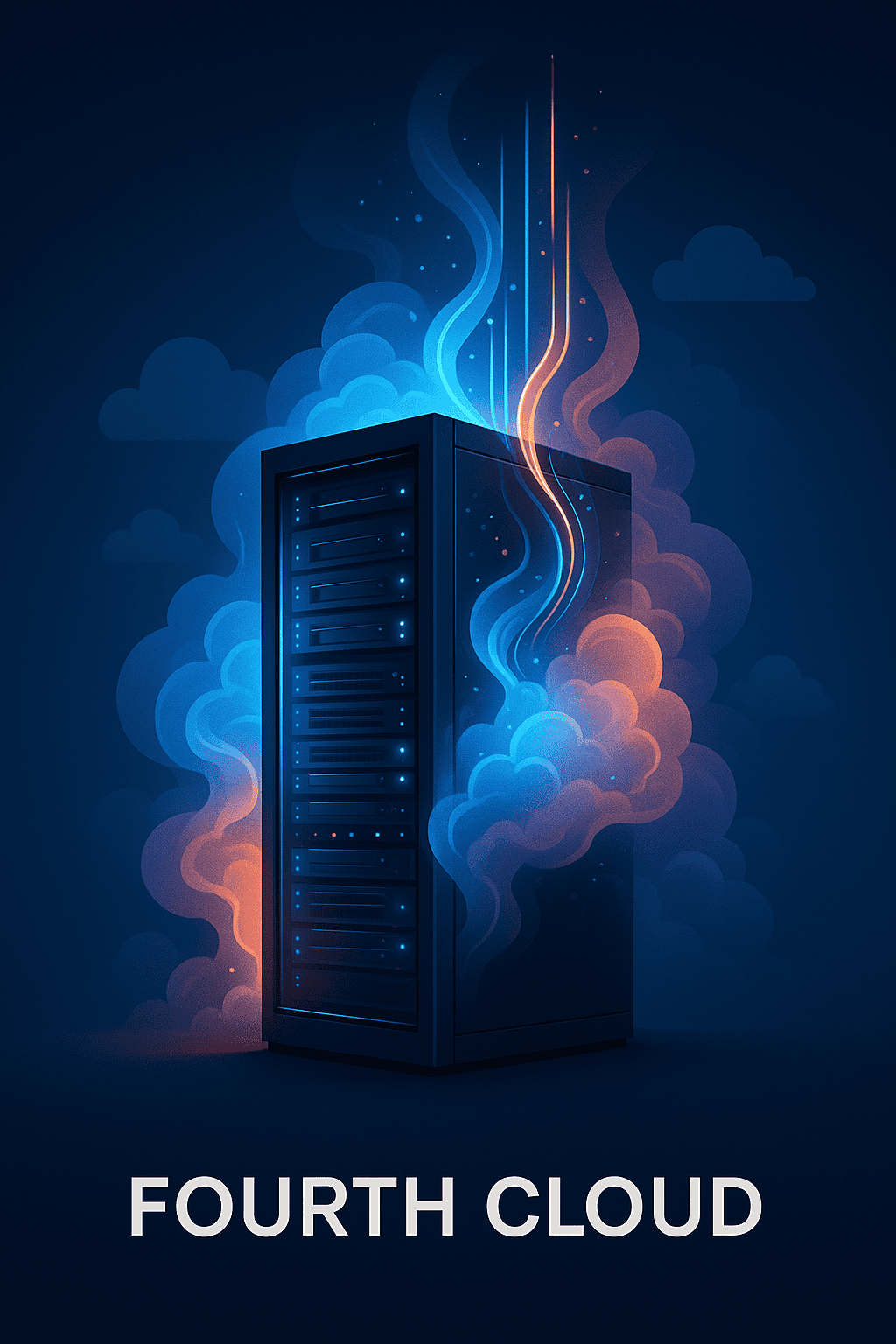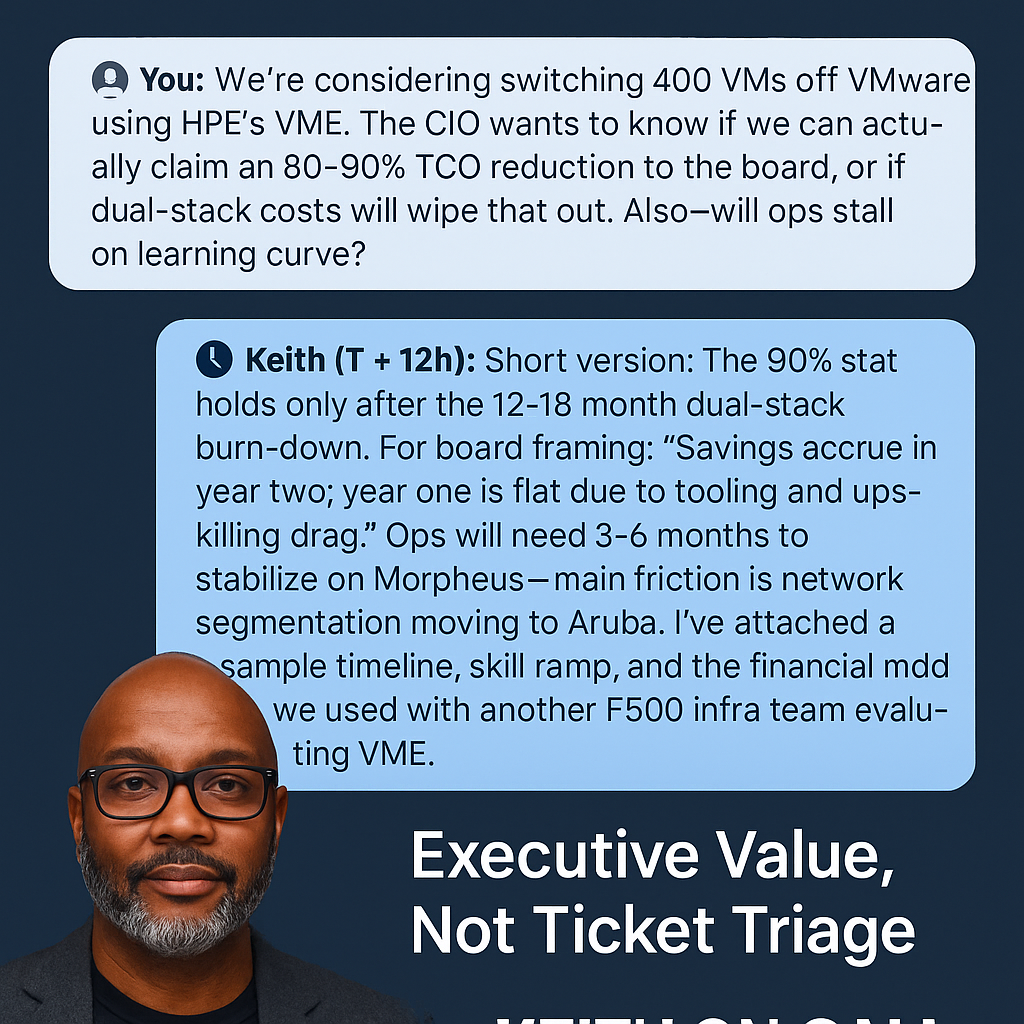Unlocking On-Prem Value: Key Insights from CxO Conversations & The Rise of the Fourth Cloud
In recent discussions with senior technology leaders, a consistent theme emerged: the enterprise IT landscape is in a fascinating state of flux. While public cloud adoption continues, a growing number of organizations are looking inward, re-evaluating their on-premises strategies, and seeking to unlock greater value from their private infrastructure. It’s clear that the simplistic “cloud-first” mantra is evolving into a more nuanced “cloud-smart” approach, where on-prem plays a strategic, revitalized role. This evolution points towards an emerging paradigm that I’ve termed “The Fourth Cloud.”
Here are some key insights from these CxO conversations that should be top of mind for every technology leader:
1. The True Cost of Cloud: Beyond the Obvious Bills
Many organizations initially embraced the public cloud for its agility and perceived cost-effectiveness. However, as scale increases, so does complexity and, often, the bill. CxOs are increasingly scrutinizing:
- Escalating Compute & Storage Expenses: While initial public cloud spend might be palatable, consistent, always-on workloads at scale can become surprisingly expensive. Leaders are now looking for on-prem solutions that can demonstrably deliver significant, quantifiable savings for these foundational services, often proving a rapid return on investment.
- Hidden Operational Costs: Beyond the core compute, networking, and storage, “hidden” cloud costs are becoming a major pain point. Think about the spiraling expenses associated with services like centralized logging, monitoring, and data egress. The ability to run these critical, high-volume functions efficiently on-premises is a significant driver for repatriation or hybrid models.
- The AI/LLM “Cost Bomb”: The explosion of AI and Large Language Model (LLM) workloads introduces a new dimension to cost management. While public cloud offers accessibility, the long-term, high-volume inference costs can become astronomical. CTOs are keenly interested in on-premises alternatives that can offer predictable, contained costs for these emerging, compute-intensive applications, especially for workloads that don’t require the most bleeding-edge, specialized accelerators.
2. Reclaiming Operational Agility On-Prem
The desire for operational simplicity and agility, once a primary driver for public cloud adoption, is now a key expectation for on-premises solutions. Leaders are tired of:
- Legacy Infrastructure Complexity: Managing disparate hardware, software licenses, and complex refresh cycles across a “technology zoo” of vendors is a drain on resources. The shift away from traditional, cumbersome infrastructure is being driven by the need for platforms that simplify operations, streamline lifecycle management, and reduce vendor sprawl.
- Freeing Up Engineering Talent: CTOs recognize that their highly skilled engineers are too often consumed by “undifferentiated IT work” – tasks like complex firmware updates, manual racking and stacking, or tedious troubleshooting. The goal is to empower these engineers to focus on shipping features, building customer-facing applications, and driving strategic initiatives, rather than merely keeping the lights on.
- Speed-to-Market: Traditional on-prem infrastructure deployments can take months. The modern enterprise demands the ability to roll out new infrastructure and make developers productive in days or weeks, not quarters. Solutions that accelerate this process are seen as vital for business competitiveness.
3. The Integration Imperative: Beyond the Island
No new solution can exist in a vacuum. CxOs demand seamless integration with their existing enterprise ecosystem, particularly for critical functions:
- Disaster Recovery & Business Continuity: Any on-prem infrastructure must provide robust resiliency primitives – think availability zones, multi-rack capabilities, and data replication – and integrate flawlessly with established data protection and disaster recovery tools. Demonstrating compatibility with current DR solutions is non-negotiable for enterprise adoption.
- Security & Monitoring: The ability to plug into existing SIEM (Security Information and Event Management) and XDR (Extended Detection and Response) platforms for real-time security event monitoring, logging, and audit at the infrastructure layer is paramount for compliance and risk management. Enterprises need solutions that speak their existing security language.
- Co-existence, Not Replacement: For many, the goal isn’t a wholesale rip-and-place. New on-prem solutions must be able to “play nicely” with long-term investments in other systems, such as existing enterprise storage arrays or cloud services. The focus is on embracing a hybrid, multi-vendor reality rather than demanding a hostile takeover of the entire stack.
4. De-risking Innovation: The Strategic PoC
Adopting new technology, especially from a relatively newer vendor, carries inherent risk. CTOs are looking for ways to de-risk these decisions:
- “Camel’s Nose Under the Tent” Strategy: Rather than demanding a massive, full-scale commitment upfront, enterprises are more receptive to low-risk, contained proofs of concept. This might involve deploying a new solution for specific “edge cases,” remote locations, or new project build-outs where the impact is limited but the learning and quantifiable ROI can be significant.
- Quantifiable Performance Beyond Benchmarks: While raw performance numbers are interesting, the real value lies in business outcomes. Demonstrating how a new solution accelerates developer productivity, reduces time-to-deployment, or streamlines specific operational workflows is far more compelling than abstract benchmarks.
- Peer Validation and Transparency: Hearing about successful deployments from peer organizations – ideally solving similar business-level challenges – is a powerful motivator. Transparency about a vendor’s foundational technology, long-term viability (e.g., support models, hardware refresh cycles), and even “exit strategies” (portability through open APIs) builds crucial trust.
The Future of On-Prem: The “Fourth Cloud” Paradigm
The conversations consistently point to a future where on-premises infrastructure is no longer a static, costly monolith, but a dynamic, cloud-like extension of the enterprise’s IT capabilities. This is what I refer to as The Fourth Cloud.
Unlike traditional private clouds (which often replicated the complexity of legacy IT on-prem) or even standard hybrid cloud models (which often struggled with inconsistent APIs and management across public and private environments), The Fourth Cloud offers a distinct proposition. It embodies:
- Public Cloud’s Best Attributes, On-Prem: The agility, API-driven automation, self-service provisioning, and consistent operational model typically found in hyperscale public clouds are now delivered directly within the customer’s own data center.
- Predictability, Control, and Data Proximity: This paradigm re-emphasizes the benefits of on-prem, including predictable costs (free from unexpected egress or operational charges), sovereign control over data, and low-latency access to mission-critical applications.
- True Hybrid Infrastructure Enablement: For organizations that are strong believers in hybrid infrastructure, The Fourth Cloud doesn’t just connect two different worlds; it transforms the on-premises world to be a seamless, highly capable peer to the public cloud. This addresses many of the practical challenges associated with truly leveraging a hybrid model, allowing workloads to reside precisely where they deliver the most value – be it for cost, latency, security, or compliance.
For CTOs, the challenge and opportunity lies in identifying solutions that truly embody this vision, enabling their organizations to optimize spend, accelerate innovation, and securely manage their digital future wherever their data resides. By embracing The Fourth Cloud, we’re not just deploying technology; we’re establishing a new standard for on-premises computing that is agile, cost-effective, and fully integrated into the cloud-smart enterprise.
What are your thoughts on these trends? Share your insights in the comments below.
Want to dive deeper into building your cloud-smart strategy and navigating the complexities of modern IT infrastructure? Check out my Gumroad offerings for exclusive content, guides, and workshops designed for forward-thinking CTOs. https://keithadvisor.gumroad.com/l/vdphg
Share This Story, Choose Your Platform!

Keith Townsend is a seasoned technology leader and Chief Technology Advisor at Futurum Group, specializing in IT infrastructure, cloud technologies, and AI. With expertise spanning cloud, virtualization, networking, and storage, Keith has been a trusted partner in transforming IT operations across industries, including pharmaceuticals, manufacturing, government, software, and financial services.
Keith’s career highlights include leading global initiatives to consolidate multiple data centers, unify disparate IT operations, and modernize mission-critical platforms for “three-letter” federal agencies. His ability to align complex technology solutions with business objectives has made him a sought-after advisor for organizations navigating digital transformation.
A recognized voice in the industry, Keith combines his deep infrastructure knowledge with AI expertise to help enterprises integrate machine learning and AI-driven solutions into their IT strategies. His leadership has extended to designing scalable architectures that support advanced analytics and automation, empowering businesses to unlock new efficiencies and capabilities.
Whether guiding data center modernization, deploying AI solutions, or advising on cloud strategies, Keith brings a unique blend of technical depth and strategic insight to every project.




